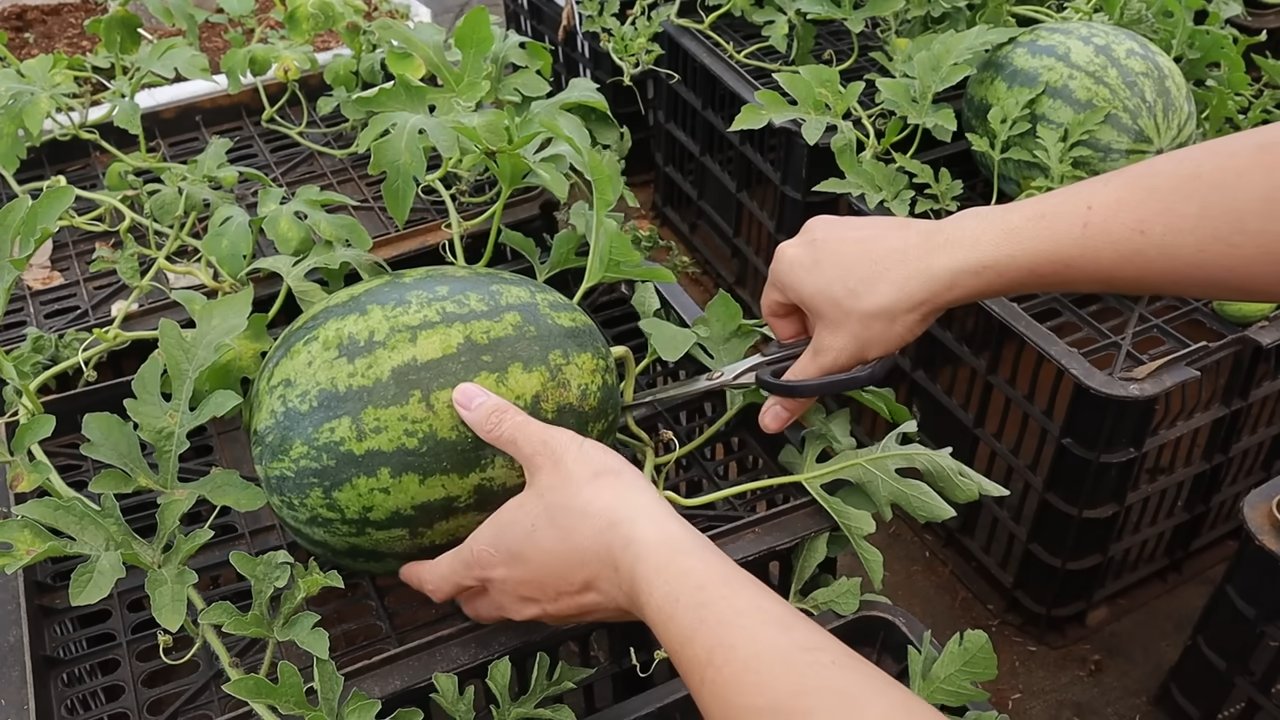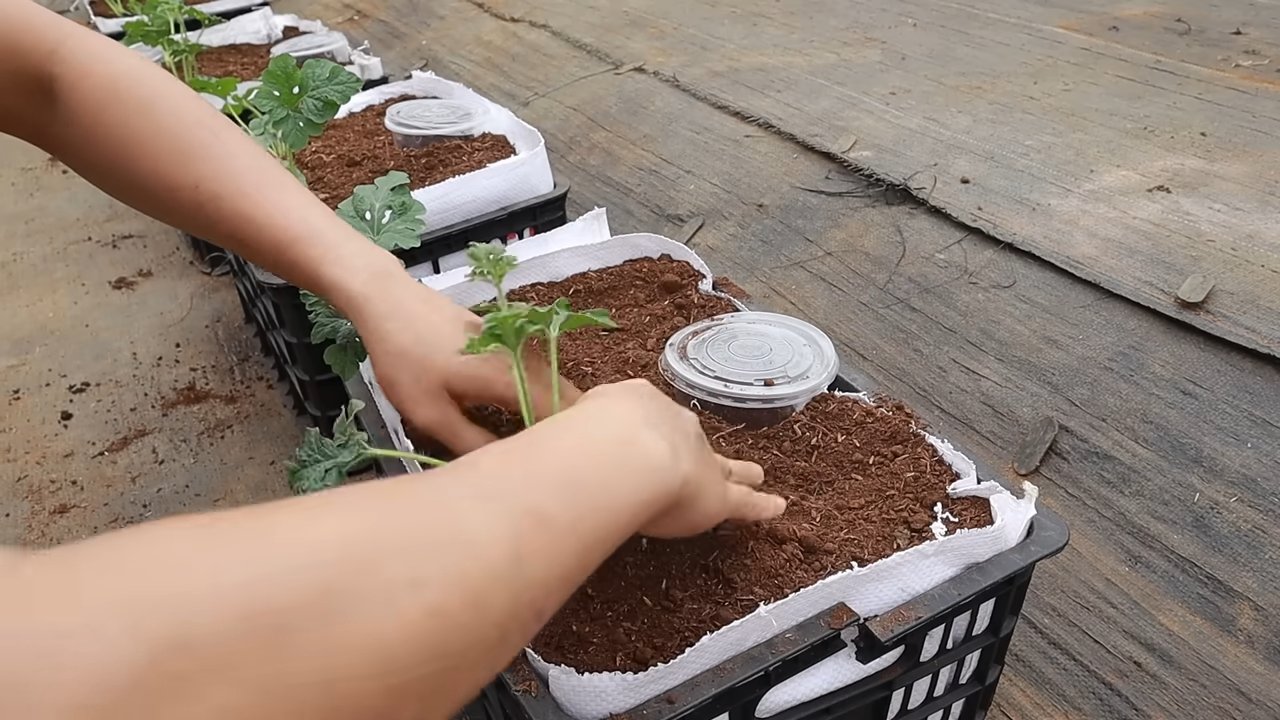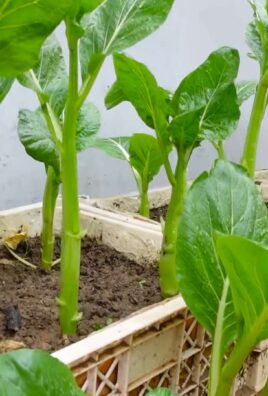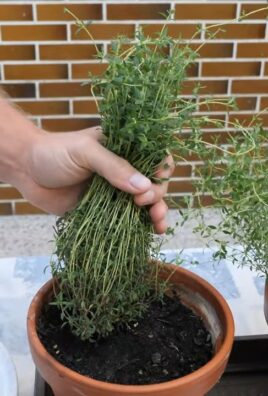Grow Watermelons Indoors? Absolutely! Imagine sinking your teeth into a juicy, homegrown watermelon in the dead of winter. Sounds like a dream, right? Well, it doesn’t have to be! For centuries, humans have been pushing the boundaries of agriculture, experimenting with techniques to cultivate their favorite fruits and vegetables in less-than-ideal conditions. From ancient Roman greenhouses to modern hydroponics, the desire to control our food source has always been a driving force.
But why would you even want to grow watermelons indoors? Maybe you live in a climate with a short growing season, or perhaps you simply crave the satisfaction of nurturing a plant from seed to fruit, regardless of the weather outside. Whatever your reason, this DIY guide is packed with simple, effective tricks and hacks to help you successfully cultivate these summertime favorites within the comfort of your own home. I’m going to show you how to create the perfect environment, from lighting and temperature to pollination and watering, so you can enjoy the sweet taste of success – and delicious, homegrown watermelons – all year round!

Growing Watermelons Indoors: Your DIY Guide for a Sweet Harvest
Hey everyone! Have you ever dreamed of harvesting juicy watermelons in the middle of winter? Sounds crazy, right? But with a little know-how and patience, it’s absolutely possible to grow watermelons indoors. I’ll show you how to tackle the project so you can soon enjoy your own homegrown watermelons. Let’s get started!
What You Need: The Preparation
Before we begin, we’ll need the right equipment, of course. Here is a list of everything you’ll need for your indoor watermelon adventure:
- Watermelon seeds: It’s best to choose a compact variety that is suitable for growing in pots. Varieties like ‘Sugar Baby’, ‘Bush Sugar Baby’, or ‘Golden Midget’ are good choices.
- Large pots: Watermelons need space! Choose pots with a diameter of at least 45-60 cm (18-24 inches) and a depth of 30-45 cm (12-18 inches).
- High-quality potting soil: A well-draining potting soil is crucial. You can also make your own mix of potting soil, compost, and perlite.
- Grow light: Watermelons need a lot of light, especially when grown indoors. A full-spectrum LED grow light is ideal.
- Trellis/Support: Watermelon plants are climbers. A support, like a trellis or a frame, will help them grow.
- Fertilizer: A balanced liquid fertilizer for vegetables is important to supply the plants with nutrients.
- Spray bottle: For moistening the leaves and the soil.
- A small brush: For pollinating the flowers (more on that later).
- Thermometer: To keep an eye on the temperature.
- Moisture meter: To check the moisture level of the soil.
Step-by-Step Guide: From Seed to Fruit
Now that we have everything, we can begin the actual growing process. Here is a detailed guide that will take you through every step:
1. Germinating the Seeds
- Preparation: Soak the watermelon seeds in lukewarm water for 24 hours. This helps to speed up germination.
- Sowing: Fill small seed starting pots or egg cartons with seed starting mix. Sow the seeds about 1-2 cm (0.5-1 inch) deep.
- Moistening: Gently moisten the soil with a spray bottle. It should be damp, but not wet.
- Warmth: Place the seed pots in a warm spot (approx. 24-27°C / 75-80°F). A heating mat can help maintain the temperature.
- Covering: Cover the pots with plastic wrap or a clear lid to increase humidity.
- Waiting: The seeds should germinate within 7-10 days. Once the seedlings appear, remove the cover and place them in a bright spot.
2. Transplanting into Larger Pots
- Preparation: Once the seedlings have 2-3 true leaves (not just the initial seed leaves), they are ready for transplanting.
- Prepare the large pots: Fill the large pots with high-quality potting soil.
- Transplanting: Carefully dig a hole in the soil large enough for the seedling’s root ball. Gently lift the seedling out of the starter pot and place it in the hole.
- Filling: Fill the hole with soil and press it down lightly.
- Watering: Water the plants thoroughly, but avoid waterlogging.
3. The Right Location and Lighting
- Location: Place the pots in a spot where the plants will get at least 6-8 hours of direct light per day. A south-facing window is ideal.
- Grow light: If you don’t have enough natural light, use an LED grow light. Position the lamp about 30-60 cm (12-24 inches) above the plants and leave it on for 12-16 hours a day.
- Temperature: Watermelons like it warm. The ideal temperature is between 21-32°C (70-90°F). Avoid drafts and sudden temperature fluctuations.
4. Watering and Fertilizing
- Watering: Water the plants regularly, but avoid waterlogging. The soil should always be slightly moist. Check the moisture level with a moisture meter or by sticking your finger into the soil.
- Fertilizing: Start fertilizing about 2 weeks after transplanting. Use a balanced liquid fertilizer for vegetables and follow the instructions on the package. Fertilize the plants every 2-3 weeks.
5. Installing a Trellis
- Install the support: As the plants get bigger, they will need a support. Place a trellis or frame in the pot and guide the plant’s vines along it.
- Tying: You can attach the vines to the support with plant ties or soft strings.
6. Pollinating the Flowers
- Identifying the flowers: Watermelon plants have male and female flowers. The female flowers have a small, undeveloped fruit right behind the blossom.
- Manual pollination: Since there are no bees or other insects indoors to pollinate, you must do it manually.
- Performing pollination: Take a small brush and collect pollen from a male flower. Then, gently transfer the pollen to the stigma of a female flower.
- Timing: It’s best to pollinate the flowers early in the morning when they are open.
- Repeat: Repeat the pollination for several female flowers to increase the chances of successful fruit set.
7. Fruit Development and Care
- Observe fruit set: If pollination was successful, the small fruit behind the female flower will begin to grow.
- Thinning: If multiple fruits are growing on one plant, you should remove some of them so the remaining fruits get enough nutrients. Leave a maximum of 2-3 fruits per plant.
- Support: As the fruits get larger, it may be necessary to support them with small nets or fabric slings to prevent them from breaking off.
- Rotating: Rotate the fruits regularly so they ripen evenly.
8. Harvest Time
- Signs of ripeness: The time to maturity depends on the variety, but generally, it takes about 80-90 days from sowing to harvest. Look for the following signs of ripeness:
- The watermelon’s rind becomes dull and loses its shine.
- The spot where the watermelon rests on the ground turns yellowish.
- When you tap the watermelon, it should sound hollow.
- The tendril closest to the fruit will become dry and brown.
- Harvesting: Carefully cut the watermelon from the plant with a sharp knife or garden shears.
Additional Tips and Tricks
Humidity: Watermelons like high humidity. You can increase the humidity by misting the leaves or placing a tray of water nearby.

Conclusion
So, there you have it! Growing watermelons indoors might seem like a daunting task, reserved for seasoned gardeners with acres of land, but with a little planning, dedication, and our simple DIY trick, you can absolutely cultivate these juicy delights right in the comfort of your own home. We’ve demystified the process, breaking it down into manageable steps that anyone can follow, regardless of their gardening experience.
Why is this DIY method a must-try? Because it opens up a world of possibilities! Imagine enjoying the sweet, refreshing taste of homegrown watermelon in the dead of winter, a taste of summer when you need it most. Think about the satisfaction of nurturing a plant from seed to fruit, witnessing the miracle of nature unfold before your eyes. And consider the environmental benefits – reducing your reliance on commercially grown produce, minimizing transportation emissions, and knowing exactly where your food comes from.
This isn’t just about growing watermelons; it’s about empowering yourself to take control of your food source, connect with nature, and experience the joy of gardening, even without a traditional outdoor space. Plus, it’s a fantastic conversation starter! Imagine the look on your friends’ faces when you tell them you grew a watermelon indoors.
But don’t just take our word for it. The real magic happens when you try it yourself. We encourage you to experiment with different watermelon varieties. Perhaps you’d like to try growing a smaller, personal-sized watermelon like ‘Sugar Baby’ or ‘Golden Midget’. Or maybe you’re feeling adventurous and want to tackle a larger variety, ensuring you have ample space and support for its growth. You can also experiment with different soil mixes to find what works best for your indoor environment. Consider adding compost tea for an extra boost of nutrients.
Remember, success in gardening often comes from trial and error. Don’t be discouraged if your first attempt isn’t perfect. Learn from your mistakes, adjust your approach, and keep trying. The reward of harvesting your own homegrown watermelon is well worth the effort.
We’re confident that with our DIY trick, you’ll be well on your way to enjoying the fruits (literally!) of your labor. So, grab your seeds, gather your supplies, and get ready to embark on this exciting indoor gardening adventure.
And most importantly, we want to hear about your experience! Share your photos, tips, and challenges with us in the comments below. Let’s create a community of indoor watermelon growers, supporting each other and celebrating our successes. Let us know what worked for you, what didn’t, and any variations you tried. Your feedback will help us refine our method and inspire others to give it a try. Let’s all learn together how to successfully grow watermelons indoors!
Frequently Asked Questions (FAQ)
1. What is the best watermelon variety to grow indoors?
While you can technically grow any watermelon variety indoors, smaller, bush-type varieties are generally more suitable due to space constraints. ‘Sugar Baby,’ ‘Golden Midget,’ and ‘Bush Sugar Baby’ are excellent choices. These varieties mature relatively quickly and produce smaller fruits, making them easier to manage in a container. Larger varieties like ‘Charleston Gray’ or ‘Crimson Sweet’ can be grown, but they require significantly more space, a larger container, and a more robust support system. Consider the size of your growing area and choose a variety that will thrive in that environment.
2. How much sunlight do indoor watermelons need?
Watermelons are sun-loving plants and require at least 6-8 hours of direct sunlight per day to thrive. If you don’t have a south-facing window that provides sufficient sunlight, you’ll need to supplement with grow lights. Full-spectrum LED grow lights are a great option, as they provide the necessary light spectrum for healthy plant growth. Position the grow lights a few inches above the plants and adjust the height as they grow. Monitor your plants closely for signs of insufficient light, such as leggy growth or pale leaves.
3. What size container do I need for growing watermelons indoors?
The size of the container depends on the watermelon variety you’re growing. For smaller varieties like ‘Sugar Baby,’ a 15-20 gallon container is usually sufficient. For larger varieties, you’ll need a container that’s at least 25-30 gallons. Ensure the container has drainage holes to prevent waterlogging. Choose a sturdy container made of plastic, ceramic, or wood. Consider using a fabric pot, as it allows for better aeration and drainage.
4. How often should I water my indoor watermelon plants?
Watermelon plants need consistent moisture, especially during flowering and fruiting. Water deeply whenever the top inch of soil feels dry to the touch. Avoid overwatering, as this can lead to root rot. The frequency of watering will depend on factors such as the size of the container, the type of soil, and the temperature and humidity of your indoor environment. Check the soil moisture regularly and adjust your watering schedule accordingly.
5. How do I pollinate my indoor watermelon flowers?
Watermelons are not self-pollinating, meaning they require pollination to produce fruit. Since you won’t have bees or other pollinators indoors, you’ll need to hand-pollinate the flowers. Use a small paintbrush or cotton swab to transfer pollen from the male flowers to the female flowers. Male flowers have a long, thin stem, while female flowers have a small, immature fruit at the base. Pollinate the flowers in the morning, when the pollen is most viable. Repeat the pollination process for several days to ensure successful fruit set.
6. What kind of fertilizer should I use for indoor watermelons?
Watermelons are heavy feeders and require regular fertilization. Use a balanced fertilizer with an NPK ratio of 10-10-10 during the early stages of growth. Once the plants start flowering, switch to a fertilizer with a higher phosphorus content (e.g., 5-10-5) to promote fruit development. Follow the instructions on the fertilizer label and avoid over-fertilizing, as this can damage the plants. You can also supplement with organic fertilizers like compost tea or fish emulsion.
7. How long does it take to grow a watermelon indoors?
The time it takes to grow a watermelon indoors depends on the variety and growing conditions. Generally, it takes 70-90 days from planting to harvest. Provide your plants with optimal sunlight, water, and nutrients to ensure they mature quickly. Monitor the fruits closely for signs of ripeness, such as a dull thud when tapped and a change in color on the underside of the fruit.
8. How do I support the weight of the growing watermelons?
As the watermelons grow, they can become quite heavy and may need support to prevent the vines from breaking. Use slings made of netting, fabric, or pantyhose to support the fruits. Tie the slings to a sturdy trellis or support structure. Ensure the slings are strong enough to hold the weight of the mature watermelons.
9. What are some common problems when growing watermelons indoors and how do I fix them?
Some common problems include powdery mildew, aphids, and spider mites. Powdery mildew can be treated with a fungicide or a homemade solution of baking soda and water. Aphids and spider mites can be controlled with insecticidal soap or neem oil. Ensure good air circulation to prevent fungal diseases. Regularly inspect your plants for pests and diseases and take action promptly to prevent them from spreading.
10. Can I grow watermelons indoors year-round?
Yes, with the right conditions, you can grow watermelons indoors year-round. You’ll need to provide adequate light, warmth, and humidity. Use grow lights to supplement natural sunlight during the winter months. Maintain a consistent temperature and humidity level. With proper care, you can enjoy fresh, homegrown watermelons any time of the year.




Leave a Comment